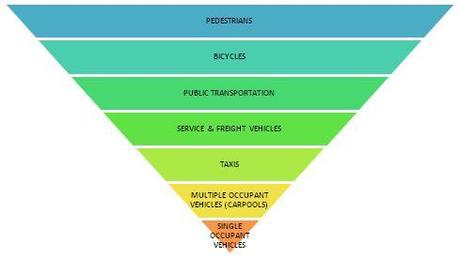What is Green Transportation?
Transportation is a major contributor in global climate change. It accounts for almost 23% of the world’s total carbon dioxide emissions from fossil fuel combustion. Of these total carbon dioxide emissions, road transport accounts for 75% and this share is increasing every day. Around 95% of all road transportation depends on oil; this corresponds to 60% of world’s total oil consumption. All this puts lot of pressure on the national governments to devise policies to reduce greenhouse gas emissions as well as oil demands.
Transportation, being a major contributor to greenhouse gas emissions, is the prime target for reducing air pollution and obtaining sustainable environment. This leads to Green Transportation, which means any kind of transportation practice or vehicle that is eco-friendly and does not have any negative impact on the immediate environment.
Green transportation involves effective and efficient resource utilization, changes in transportation structure and making healthier travel choices. This demands enhanced public awareness & participation, control of private vehicles and development of vehicles powered by renewable energy sources like solar, wind, electricity, biofuels etc.
Modes of Green Transportation
Though it is much more comfortable and convenient to drive one’s own private vehicle to office or market ever day but being responsible world citizens we should opt for green transportation modes that are easily accessible to everyone. Transportation Alternatives Magazine has come up with the Green Transportation Hierarchy which looks like below:

Green Transportation Hierarchy enlists the modes of green transportation. It is based on the food pyramid and illustrates an upside-down approach – with the largest portion of pedestrian walking being the most green, the top priority and the smallest portion of single occupant vehicles being the least green, the least priority. Wherever possible, single occupant vehicles should be avoided.
- Pedestrians – One should prefer to walk to the school, to work and to grocery shopping etc. Walking involves zero emission of any greenhouse gas, it’s free and an additional plus is it’s a good form of exercise for the body.
- Bicycles – Using bicycle to commute is another great mode of green transportation. Faster than walking, low cost and a healthy exercise. Buying and maintenance cost is only fraction of that required for car.
- Public Transportation – Most of the big cities have good infrastructure for public transport system. An affordable and easily accessible mode of green transportation, it is particularly useful for students and senior citizens who can get attractive discounts.
- Service and Freight Vehicles – Service and freight vehicles account for around 9% of the total greenhouse gas emissions. Using biodiesel and electricity as the alternative fuels for service and freight transport, managing travel demand and providing more travel options will be the key strategies to align this sector to green transportation.
- Taxis – Consider eco-friendly taxis, which are hybrid and fuel efficient, as green transportation options.
- Multiple Occupant Vehicles – Also known as carpools, it is a very favorable mode of green transportation. Group of colleagues, friends and others, can use one vehicle, when driving in similar directions on regular basis. Rather than five people driving their individual vehicles in same direction, it is a more economical and eco-friendly option to have one car carrying all five to their destinations. Definitely a great way to save petrol and money!
- Single Occupant Vehicles – Opting for green vehicles powered by alternative fuels and advanced vehicle technologies puts less pressure on the environment as compared to conventional internal combustion engine vehicles running on petrol or diesel.

Benefits of Green Transportation
Green transportation has wide ranging benefits – environmental, health, economic and individual budgets. Enlisted below are some of the key benefits of using green transportation:
- Less polluted environment – Since carbon dioxide emissions from fossil fuel burning in vehicles is the major cause of increasing levels of greenhouse gases in the environment, choosing green modes of transportation will help to lead to lesser emissions.
- Better Health – There are many associated activities with green transportation which will enhance healthier lifestyle and improved quality of human life. Walking and bicycles give good exercise to the body; reduced pollution will take away the ill-effects on respiratory system and also, less traffic leads to saving time and energy as well as better road safety.
- More sustainable economic development – Manufacturing of green vehicles & expansion and improvement of public transport system will create more job opportunities, thus reducing socio-economic inequalities and building more sustainable economies.
- Money Saving – Using green modes of transportation results in lesser fuel consumption and saving lot of money every year.
Apart from this, there are various ways to go green at home. This will not only reduce the consumption of energy but will also save our environment from further degradation.

